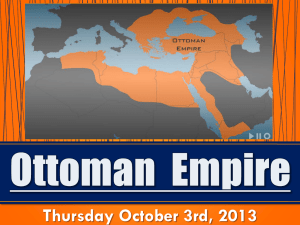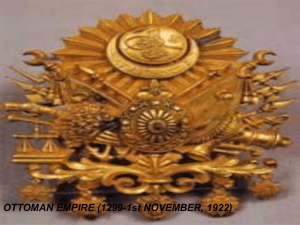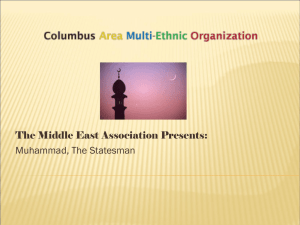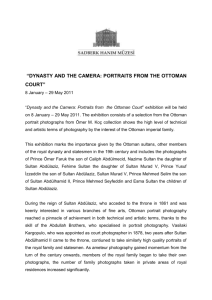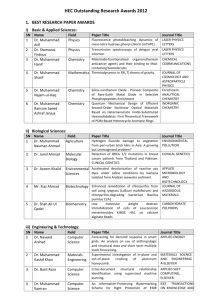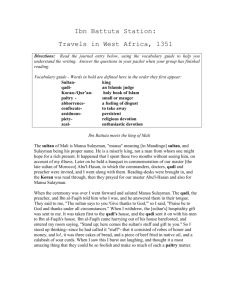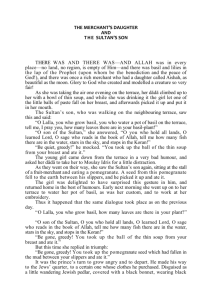Sultan Muhammad Mosavvar Tabrizi and his Milieu There is little
advertisement
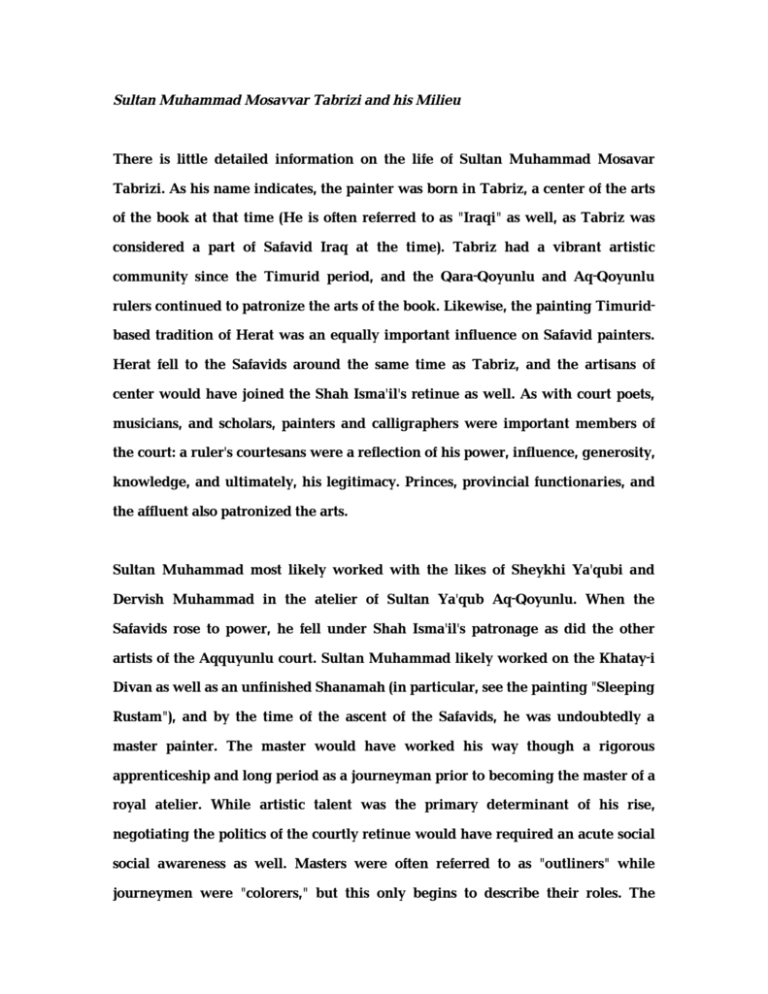
Sultan Muhammad Mosavvar Tabrizi and his Milieu There is little detailed information on the life of Sultan Muhammad Mosavar Tabrizi. As his name indicates, the painter was born in Tabriz, a center of the arts of the book at that time (He is often referred to as "Iraqi" as well, as Tabriz was considered a part of Safavid Iraq at the time). Tabriz had a vibrant artistic community since the Timurid period, and the Qara-Qoyunlu and Aq-Qoyunlu rulers continued to patronize the arts of the book. Likewise, the painting Timuridbased tradition of Herat was an equally important influence on Safavid painters. Herat fell to the Safavids around the same time as Tabriz, and the artisans of center would have joined the Shah Isma'il's retinue as well. As with court poets, musicians, and scholars, painters and calligraphers were important members of the court: a ruler's courtesans were a reflection of his power, influence, generosity, knowledge, and ultimately, his legitimacy. Princes, provincial functionaries, and the affluent also patronized the arts. Sultan Muhammad most likely worked with the likes of Sheykhi Ya'qubi and Dervish Muhammad in the atelier of Sultan Ya'qub Aq-Qoyunlu. When the Safavids rose to power, he fell under Shah Isma'il's patronage as did the other artists of the Aqquyunlu court. Sultan Muhammad likely worked on the Khatay-i Divan as well as an unfinished Shanamah (in particular, see the painting "Sleeping Rustam"), and by the time of the ascent of the Safavids, he was undoubtedly a master painter. The master would have worked his way though a rigorous apprenticeship and long period as a journeyman prior to becoming the master of a royal atelier. While artistic talent was the primary determinant of his rise, negotiating the politics of the courtly retinue would have required an acute social social awareness as well. Masters were often referred to as "outliners" while journeymen were "colorers," but this only begins to describe their roles. The master artist was in fact responsible for organizing a group of painters, assigning a set of tasks ranging from the purchase of materials and mixing of inks and paints, to the outlining and coloring of a scene. The journeymen had a specialty while they also would have been responsible for the general maintenance of the workshop. With this in mind, one must think of the production of any one painting as a collective effort, more shaped by the master than an expression of his individual style or approach. As Welch notes, Sultan Muhammad was likely responsible for the detailed work in a painting such as "The Death of Zahhak," much of the work was completed by journeymen artists. Azhand and others believe that Sultan Muhammad was the director of the workshop for approximately the first 100 folios of the Shah Tahmasp Shahnamah (the remaining works were directed by Mir Mosavvar and Aqa Mirak). This does not mean that each of these initial folios should be attributed to him--his works include the "Court of Gayumars," "the Feast of Sadah," "Tahmuras Defeats the Divs," "Zahhak is Told His Fate," "Zahhak Slays Birmayah," "Faridun Strikes Down Zahhak," "The Death of Zahhak," "Zal Consults the Magi" (with painter D), and "Qaran Slays Barman" (with Mir Sayyid Ali). After the Shahnamah, Sultan Muhamad also painted scenes in an illustrated version of Nizami's Khamsah (British acc. no. 2265). Perhaps his most famous piece from this project is "the Prophet's Ascension." When Sam Mirza, Shah Tahmasp's brother, commissioned a Divan of Hafiz (including "the Nowruz Feast," "Two Lovers and Divinely and Worldly Drunkenness"), he also turned to Sultan Muhammad. For more information, see: The International Congress on Sultan Muhammad: The Miniaturist of the Tabriz School. http://sultanmohammad.honar.ac.ir/. Welch, Stuart Cary. 1972. A King's Book of Kings. New York: Helvetica Press and the Metropolitan Museum of Art. ----------------------------------. 1979. Wonders of the Age: Masterpieces of Early Safavid Painting. Cambridge: Fogg Art Museum, Harvard University.


